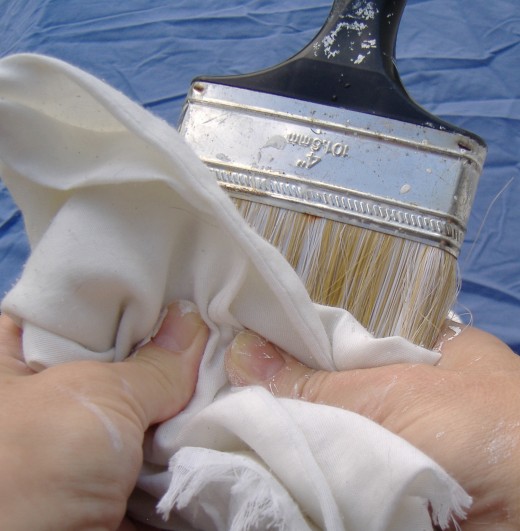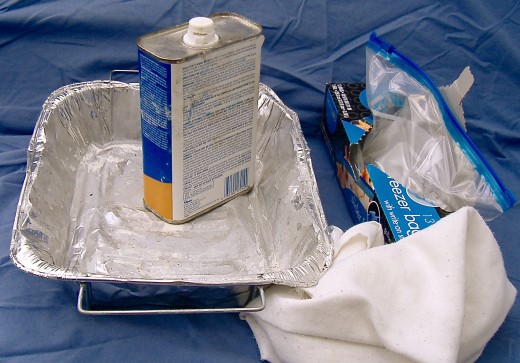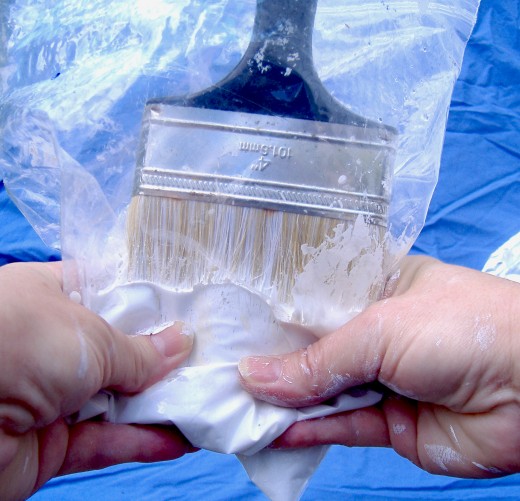How to Clean Solvent-Based Paints from Brushes

The Dilemma
While most house paints in use today are latex, the do-it-yourselfer still sometimes has occasion to use an oil or solvent-based finish. The problem with this is that you are left with brushes that can only be cleaned with smelly, toxic fluids such as turpentine or laquer thinner. Not only do you need to get them clean quickly to avoid over-exposure to these materials, but there is always the question of how to dispose of these solvents.
Dealing With It; Phase One
Your first step will be to remove excess paint from the brush.
You'll need the following materials:
- newspaper
- rag
- rubber gloves, if your hands are sensitive
1.Wipe the brush on the rim of the paint can to remove some of the paint.
2. Stroke it back & forth on newspaper.
3. Wrap a rag around it & squeeze as much paint out as possible.
Phase Two
Materials needed:
- quart or gallon freezer bags or sturdy food storage bags
- turpentine, laquer thinner or what ever solvent the label recommends
- disposable aluminum baking pan
- additional rags

- Place the brush into a freezer bag or sturdy food storage bag.
- Pour solvent into it, just enough to cover the brush. Zip it as far across as you can.
- Squeeze the bag with both hands, working the solvent through the paintbrush.

4. Lay bag & brush in an aluminum tray to soak for a few minutes.
5. Remove the brush, squeezing the excess fluid out as you go.
6. Zip the bag & lay it aside in the tray until ready to clean up.
7. Wrap brush in a rag & squeeze to soak up extra fluid.
8. Place brush & fresh solvent in the second bag, and repeat the process.
9. Do this with a third bag. (At this point, the solvent should look almost clear.)
Finishing Up
If you have no other brushes to clean, place rags in each bag to soak up the solvent.
If possible, spread the rags on a roof or in some other sunny spot, ( away from pets and kids) where the solvent will evaporate.
Once they are completely dry, dispose of them in the trash. ( It's best to place them in a container that is not tightly sealed, in case there are any residual fumes.)
Don't throw the bags away! They can be re-used for the next project. Simply turn them inside out and let them dry.





